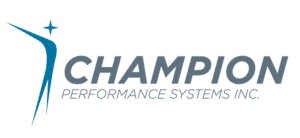No one wants to be an Icarus, the character from Greek mythology who flew too close to the sun and died. Sure and steady flight — that’s the goal. To do that effectively, you need to scale up. You need to set yourself up for success by creating a framework for your business that will generate and sustain growth.
Whether you need to start scaling yesterday or you’re just starting to think about the future, you want to use your time and your resources as effectively as possible. You need to choose the best scaling-up methodology and set your best team to implement it, always keeping an eye on your business’s key performance indicators (KPIs).
Scale Up Your Business
But what does that look like? How do you build the sure foundations that can support even your most ambitious dreams? Read on for 10 tips provided by the preeminent scaling up growth.
Tip #1: Understand Where You’ve Been (History)
Before you figure out your path forward, identify the path you took to get here. What’s the story of your business so far? What worked? What didn’t? What did you learn? Where did you stumble and fall? Where did you succeed?
As you look back, remember the whys of your business. There are core values and objectives that went into its formation. What were they, and how can you remain true to that ethos even if the vision changes?
Tip #2: Understand Where You’re Going (Future)
It’s time to look in the other direction. How far forward can you look? Be ambitious with your thinking — set your Big Hairy Audacious Goal (BHAG, pronounced bee hag).
In order to figure out your BHAG, you’ll need to flesh out that picture of the future. What are the top-line revenues you imagine? What about the profits? Think about the culture as well as concrete, KPI-related goals. How big do you want to be, with how many employees? How would you want someone to describe the experience of working for your company?
Throughout this process, keep your picture of the future in mind.
Tip #3: Understand Where You Are (Current)
Once you have a sense of where you’ve been and where you want to go, you’ll gain perspective on your present. How do you connect one to the other? What do you need to do today in order to position yourself for your best tomorrow?
This is where you can start introducing the scaling up growth tools and all of the respective terminology. There are two major systems when it comes to scaling up methodology. Whatever you choose as your primary workbook — Verne Harnish’s Scaling Up vs EOS (Entrepreneurial Operating System) — you can borrow concepts and tools from either.
Take a snapshot of the present moment, focusing on areas like your personnel, values, systems, and KPIs. What is the gap from where you are right now to where you want to be? Evaluate your present in terms of the present year, present quarter, and even present day. Sometimes little things become big ones when scaling.
Tip #4: Assemble and Coach Your A-team
Part of your Scaling Up assessment will include a team assessment of all the leaders in your organization. You need to evaluate both the fit and the performance of everyone who occupies the top tier.
A number of different metrics go into judging individual performance. You might consider:
- Attendance. Do they show up — figuratively as well as literally — when they need to?
- Helpfulness. Are they strong team players?
- Efficiency. How much work do they get done and how quickly?
- Initiative. Do they adapt and innovate?
- Quality. How strong is the work that they put out?
With the right systems and structures and clear KPIs, you can coach B-players up to the level of A-performers. But you need to be brutal about having an A-team, and if their performance isn’t cutting it, you need to make the tough choices.
“Fit” is even more nebulous than “performance.” Fit is defined as the “untrainable skills” that best fit your culture of performance. What is it that you can’t teach that are most critical (e.g. work ethic, etc.).Your team members should fit together and fit their individual roles, working together with the right chemistry for each position.
Work to get it right here and now. Anytime that you change up the players, the entire A-team changes. Later changes mean that you’ll need to work through all the key phases again in order to get back up to speed.
Tip #5: Think Strategically
The importance of strategic thinking is absolutely critical. Before you can begin to plan, you need to think, getting both your creative and your analytical sides into the game.
Examine your business from all angles and perspectives. Think as big as possible but also bring it down to the details. Among other things, you might consider:
- Various trajectories for your business
- Possible hurdles and setbacks
- Potential sources of extra capital
- Bottlenecks (current or predicted) created by inefficient technologies
- Business networks and their individual stability
- Elements that you could potentially outsource or bring in-house
Always, your goal is Crystal Clear Clarity (C3). Think until you don’t need to think. Think until the knowledge is automatic.
You might incorporate Scaling Up worksheets or other tools that will prompt you with outside observations. There’s no single answer as powerful as being asked the right questions.
Tip #6: Plan Strategically
Once you’ve achieved clarity, you can sit down and plan, identifying and developing the “operational DNA” that should pattern all of your activity and the organizational structure that will bear it out on the macroscopic level.
This plan will be dynamic. You’ll review it every month, asking, “What works? What doesn’t? What needs to change?”
The very heart of your strategy should be a one-page strategic plan. This organic, working document lays out the unifying vision and core values that will take you to the next level and beyond.
In the planning stage, you’ll also have to reconsider questions such as EOS vs Scaling Up. As mentioned, you don’t need to view the matter as either/or. For one thing, the creator of EOS, Gino Wickman, adopts and adapts many of the principles found in Harnish’s system.
For another, you should embrace the practice of stealing wisdom wherever you encounter it. Even if all you take from Scaling Up is the one-page strategic plan for scaling up your business, that single tool provides you with a valuable resource. Or you might incorporate Harnish’s focus on scaling up cash, which will drive growth.
Building a solid, yet customized meeting rhythm is critical to ensure forward movement and accountability. —These need to be in the form of daily huddles, weekly check-ins, monthly reviews, quarterly and annual planning sessions. These meetings will keep leadership “on top and out front” of the growth of the company. And developing a rolling three week view of both actions and KPI’s will provide a clear perspective that your company cannot afford to ignore.
Tip #7: Strategic Execution
It’s time to execute the plan, to take the necessary actions for that day, that week, that quarter, and that year.
Ask yourself, “What am I doing today that realizes the plan and moves us forward?” Scaling Up execution centers on pairing ambition with habit-formation. That’s one reason that the Rockefeller Habits are such an effective tool.
While some of the habits are more about strategic thinking and planning, others focus on the necessary actions to get things done. How can you build and launch your one-page strategic plan?
For example, you’ll need to:
- Focus on one primary goal, and the KPI’s to achieve it, per quarter
- Develop communication that is both efficient and effective
- Assign Champions for each initiative to establish clear accountability
- Solicit and report on customer and employee feedback
- Maintain transparency regarding both the plan and the performance
Get the important things done.
You could also identify those things that you don’t need to do. Put your company data to work. You have all the necessary data to maintain high standards while Scaling Up at your fingertips. Used well, it can help you identify bottlenecks and streamline spending. Depending on your industry, you can even use it to personalize customer experiences without the time that one-to-one contact requires.
Tip #8: Continually Review, Revise, and Refine (R3)
Remember that the plan has to be both organic and dynamic. You should be constantly reviewing it and checking it against your results.
Schedule more formal reviews on a weekly or monthly basis and try implementing a scaling up daily huddle. Are the numbers where they should be? Have projects advanced at the right pace? If not, where’s the flaw — in the plan or in the execution?
This kind of review process raises the level of accountability. If people are failing to execute their objectives, why is that? And what’s great about holding team sessions is that NO ONE wants to show up without their *&^% done!
There are several possible answers. If they didn’t get around to it, then they need to do better. If they were confused about the objective, you both need to do better and clearly communicate your expectations. If a problem or conflict has prevented them, the plan needs to do better and should be revised.
Continually refine your plan, making its implementation ever smoother and more productive. However, revisions and edits must be based on specific data and/or changes that make them necessary. You can’t have successful activity without alignment with and influence on your numbers.
Tip #9: Ignite, Inspire, and Impact (I3)
It’s the leader’s job to ignite some fires, to get people thinking a little bit differently. That fire opens up your team members and even the culture of your organization to change and innovation. Scaling Up coaches can help, but in the day-to-day, that energy has to come from you.
Once you’ve ignited change, you need to inspire your team to own it. The Scaling Up processes need to become part of your operational DNA, ingrained at every level of your company.
That’s how you achieve real impact. You can’t win a national championship without strict adherence to both strategy and execution. You implement the right processes, put your strongest team on the court, and set your goals for each game. And when it’s all over, you look up at the scoreboard and realize that you’ve won.
So ignite — get people excited about the future. Inspire — encourage people to own the scaling up methodology and their individual roles in the venture. And the impact will come. The results naturally happen as a byproduct of the process.
Tip #10: Have Fun…Enjoy the Ride
Boredom and tension are counterproductive. You and your team need to enjoy working together in order to achieve the best results. You want people to look forward to the daily huddles and weekly action progress reports.
One way to accomplish this is to embrace fun and humor throughout the workday. You might start meetings with a joke or a funny question or be a little sarcastic. Try different things that allow people to relax and focus. And if you’re running more online meetings, come up with ways to keep these fun. Get creative!
It’ll take some time for you to get into a rhythm where everyone is achieving at their highest possible levels (typically anywhere from 3 to 12 months). And if you don’t enjoy the journey, you’re less likely to reach the destination.
BONUS Tip #11: Get Outside Help!
Don’t try to do this yourself. The best teams never put the coach on the field.
Sometimes a leader will take the book Scaling Up and try to run a two-day seminar under the Scaling Up logo. But then they can’t participate. And if they do, it screws up the whole dynamic.
By bringing in an outside coach like Champion PSI, you get the advantage of a third-party, objective point of view — not to mention the incredibly valuable expertise and experience that comes from having worked with hundreds of teams. Perhaps best of all, you become part of the A-team, allowing for more innovative planning and more complete buy-in.
Sign up for the executive Scaling Up performance program today. You’ll receive the Scaling Up coaching you need in order to grow to your full potential. From your one-page strategic plan — (OPSP) — to the ultimate realization of your hopes and dreams, we’re excited to teach, coach, and facilitate this journey together.










